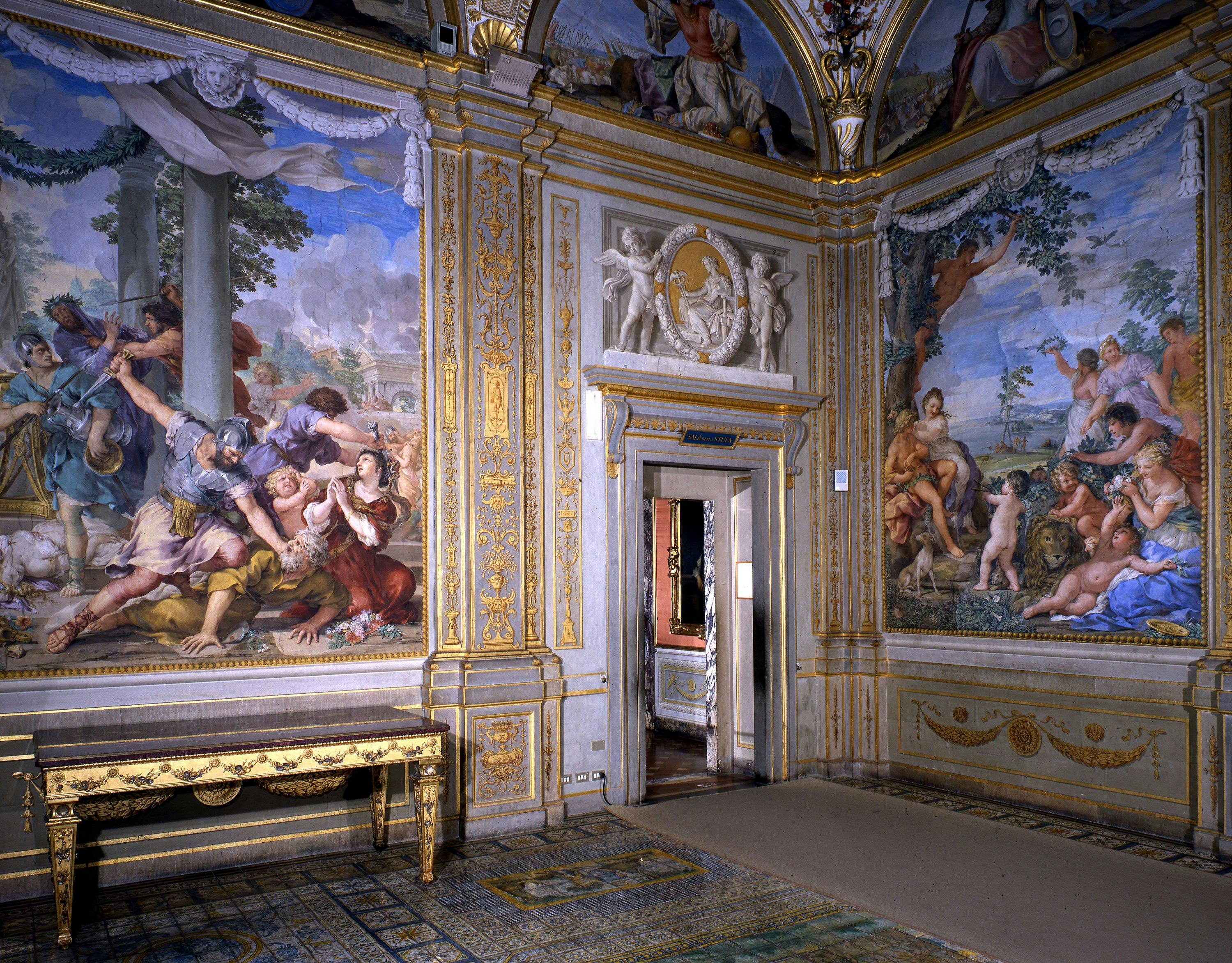Stove Room
Walls: Pietro Berrettini, known as Pietro da Cortona (Cortona 1597 - Rome 1669) Ceiling: Michelangelo Cinganelli (Florence 1558 - Florence 1635) Matteo Rosselli (Florence 1578 - 1650) Ottavio Vannini (Florence 1585 – 1643)
The room, originally an open gallery, was later closed off in the seventeenth century and restructured as a “stove” room, a bathroom heated using the same techniques as the Roman baths and intended for private use by the Grand Duke, whose bedroom would have been located next door. The decoration was commissioned by Grand Duke Ferdinand II de’ Medici, who initially employed various Florentine masters including Matteo Rosselli, Michelangelo Cinganelli and Ottavio Vannini to decorate the vaults and lunettes with images of the great kings of antiquity and allegorical figures. In 1637, Pietro da Cortona was then entrusted to decorate the walls with a depiction of The four ages of man, a theme inspired by Ovid and most likely proposed by Michelangelo Buonarroti the Younger: the Golden Age and Silver Age diptych was painted in 1637, followed by the scenes of the Bronze Age and Iron Age in 1641. These frescoes painted by Pietro da Cortona were the birth of the great Baroque murals and marked the arrival of a new style in Florence, introducing a lighter lexicon and narrative inspired by the Venetian paintings of Paolo Veronese and the Roman frescoes of Annibale Carracci.
The imaginary Arcadia of the Golden Age painting, where farmers, children and animals coexist in harmony, evokes the peaceful and happy rule of Grand Duke Ferdinando, whose reign further flourished following his marriage to Vittoria della Rovere in 1637, a joyous event alluded to by the painter in his portrayal of a young couple courting below the majestic oak, the heraldic emblem of the Rovere family, and the heraldic Marzocco lion, symbol of Florence and the Medici house. The Bronze and Iron Age paintings are more agitated and Rubenesque in nature, painted some years apart and which contrast images of a civilized society with the violent events of war, another example of an erudite iconographic technique.
